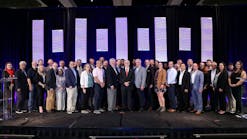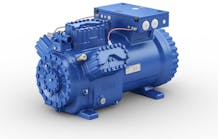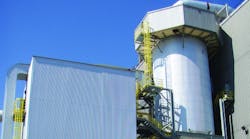In early 2013, the U.S. Environmental Protection Agency (EPA) published national standards governing the emission of hazardous air pollutants (HAP) from industrial, commercial, and institutional boilers. Separate rules were issued for boilers located at major sources (facilities with the potential to emit 10 or more tons of any single HAP and/or 25 or more tons of total HAP per year) and area sources (facilities with the potential to emit less than 10 tons of any single HAP and/or less than 25 tons of total HAP per year).
Covering both new and existing boilers, which are divided into 19 subcategories, the rules establish numerical limits for emissions of five pollutants: carbon monoxide (CO), hydrogen chloride (HCl), mercury (Hg), and filterable particulate matter or total selected metals. There are various requirements regarding start-up and shutdown to meet, and most boilers are required to have a tune-up; meanwhile, a one-time energy assessment is required for affected units.
Existing major sources were given three years—until Jan. 31, 2016—to comply, but can be granted a fourth year for the installation of controls if needed. Existing area sources must have completed their initial tune-up and energy assessment by March 21, 2014, and emissions testing by Sept. 17, 2014. Although portions of the rules are being challenged in court, these dates have not changed.
It is worth noting that an area source that burns only natural gas does not have any requirements under the regulations.
What Is Being Done
Area sources are busy performing their tune-ups and energy assessments. Although these tasks generally are straightforward, tips and recommendations are given later in this article.
Most facilities required to comply with the emission limits are either still evaluating their options or just starting to implement their compliance strategy. Rare is the facility that can comply with new emission limits without a capital improvement or operational change. In developing a compliance strategy, owners need to consider:
• Natural-gas prices. They are low, but how long will they remain so?
• The potential for significant capital expenditures on air-pollution-control equipment and/or combustion-system modifications and increased operating costs associated with the use of coal and biomass.
• How long it will be until additional environmental regulations that result in new and/or more stringent emission limits are enacted. The EPA is considering greenhouse-gas regulations for existing power plants. Will the EPA follow that with greenhouse-gas emission limits for industrial, commercial, and institutional facilities?
Strategies being implemented include:
• The conversion of coal-fired boilers to natural gas.
• The replacement of coal-fired boilers with natural-gas-fired package boilers.
• The installation of activated-carbon-injection (ACI) systems on units with baghouses. In many cases, the boilers already are in compliance with HCl-, CO-, and particulate-emissions limits and, thus, need only to address Hg. Typically, testing is performed to determine which type of activated carbon works best. The resulting data can be important in ACI-system design. The difference in cost between an ACI system that needs a storage silo and one that can use a bulk-bag storage system can be significant.
• In the case of an institutional facility in an urban campus setting, the replacement of coal-fired boilers with natural-gas-fired combined heat and power (CHP). The facility is a large user of electricity and already has a well-established steam-distribution system. Installing CHP will improve overall energy efficiency. Additionally, switching to natural gas will decrease truck traffic and improve air quality on campus.
• In the case of small coal-fired electricity-generating facilities, modification of operations so coal-fired boilers become limited-use units. A limited-use unit has a load factor of less than 10 percent and is not subject to major-source emission limits. This allows owners to maintain generation capacity, but increases reliance on purchased power.
• For compliance with HCl limits, installation of dry-sorbent injection on units. In these cases, testing to determine which sorbent works best and is most cost-efficient is important.
• For solid-fuel-fired units facing challenges complying with CO limits, modification of the combustion-air system. This may involve increasing the amount and controllability of the overfire air system and/or increasing the amount of primary air being fed to the furnace.
Tune-ups
The intention behind the tune-up requirement is to ensure boilers operate as efficiently as possible, which should result in reduced fuel consumption and lower HAP emissions. A tune-up should include:
• Inspection and cleaning of the burner and replacement of parts as necessary.
• Inspection and, as necessary, adjustment of the flame pattern.
• Inspection of the control system and assurance air-to-fuel controls are calibrated correctly and working properly.
• Optimization of CO emissions consistent with manufacturer requirements and any nitrogen-oxide (NOx) permit limits.
• Measurement of CO and oxygen before and after the tune-up.
• Where applicable, assurance the flue-gas-recirculation (FGR) system, fuel-atomization system, economizer, and air heater are working properly.
• For a stoker-fired boiler, inspection of the flame pattern, bed depth, and grate condition as appropriate.
A tune-up can be performed in-house or by a third party. In either case, it must be performed by competent personnel in a safe and efficient manner. If using a third party, vet the tuner, and get a firm price for services. Planning for a tune-up should take place well before the tune-up occurs. Prior to a tune-up:
• Gather the unit’s original performance data.
• The boiler will need to be operated across its full capacity range. Determine what to do with the excess steam and/or hours of service to reduce steam load.
• Develop a plan outlining the procedures to be followed, detailing how data will be assembled, and assigning responsibilities.
Run a boiler through its entire operating range to ensure all systems are functioning properly. If using a third party, obtain a rough copy of all data before the tuner leaves the site. Confirm all data were recorded in accordance with regulatory requirements.
Energy Assessments
Like a tune-up, an energy assessment can be performed in-house or by a third party. There is no certification an assessor must possess; however, he or she must have demonstrated capabilities to evaluate energy-saving opportunities related, but not limited, to:
• Boiler-combustion management.
• Boiler thermal-energy recovery, including conventional feedwater economizers, conventional combustion-air preheaters, and condensing economizers.
• Boiler blowdown thermal-energy recovery.
• Primary energy-resource selection, including fuel switching.
• Insulation.
• Steam-trap and steam-leak management.
• Condensate recovery.
• Steam end-use management.
An assessment of a boiler must include on-site systems using energy produced by the boiler.
The role of an energy assessor is to identify energy-conservation measures (ECM). Typical ECM include:
• Improvements in insulation.
• Installation of variable-frequency drives.
• Use of economizers.
• Replacement of motor or turbine drives with more-efficient units.
• Repair of steam and compressed-air leaks.
• Installation of steam-absorption chillers.
If a third party is used, a meeting involving the assessor and all relevant facility personnel is recommended at both the start and conclusion of the site visit. While a third party may have vast experience from visiting other facilities, no one is more of an expert on your facility than you. Before anything is put in writing, make sure the assessor truly understands how the facility operates and the impacts ECM can have on operations.
The energy assessor should prepare a report that includes an inventory of major energy users and a description of each ECM. Discussion of each ECM should include:
• Capital cost.
• Energy savings.
• Operating-cost savings.
• Simple payback.
• Impact on operations.
For a cash-strapped facility owner, implementing ECM may be difficult. While the regulations do not require that ECM be implemented, there are concerns the regulatory agency may request a copy of the energy-assessment report and that the report could end up in the public domain. If this were to happen, not only could proprietary information be released, the owner could face pressure to implement ECM. Thus, careful consideration should be given as to the content of the report. A good practice is to assume the report will become public at some point.
The facility owner is required to submit to the regulatory agency signed documentation that the energy assessment was completed. This documentation is submitted with the Notification of Compliance Status (NOCS), which is due 120 days after the compliance deadline. (For boilers requiring a stack test, the NOCS is due 60 days after the test is completed.)
Converting From Coal to Natural Gas
Converting a boiler from coal to natural gas essentially eliminates particulate, HCl, Hg, and sulfur-dioxide emissions. At the same time, it reduces carbon-dioxide emissions and may lower NOx and CO emissions. What’s more, natural-gas supply and pricing are favorable and expected to remain that way for a number of years (see “Pipeline Changes Keep Natural-Gas Prices Falling”).
Before deciding to convert coal-fired boilers to natural gas, one needs to consider:
• Many coal-fired boilers are located in rural areas, where the availability of natural gas is limited. Installing a new natural-gas line with adequate capacity could be costly.
• The radiant-heat-transfer characteristics of coal and natural gas are very different. This means very different heat-distribution profiles within a furnace and, often, different furnace exit gas temperatures. A detailed engineering study should be performed to determine needed changes. These changes could include:
1) An upgrade of the steam attemperator system.
2) Superheater-surface adjustments and/or materials upgrades.
3) Modification of the economizer surface area to prevent steaming.
• Natural gas typically requires less combustion air than coal. In many cases, then, the forced-draft and induced-draft fans of a coal-fired boiler will be adequate. But if FGR is required for natural-gas firing, the size of the forced-draft fan may be inadequate. Air-heater and forced-draft-fan performance needs to be checked.
If a stoker-fired boiler is being converted from coal to natural gas, the burner can be placed in the side wall or in the bottom of the unit. Installation in the side wall works when the owner wants the option of firing coal alone or coal in combination with natural gas.
A natural-gas-fired boiler without a condensing economizer has an efficiency of about 83 percent. Depending on the type of firing and the type of coal, the efficiency of a coal-fired boiler is in the range of 80 to 89 percent. Therefore, switching to natural gas may or may not require more energy.
With a wide variety of coal-fired-boiler designs available, conversion to natural gas has to be done on a case-by-case basis.
Summary
The major- and area-source boiler rules are here to stay. There is no one-size-fits-all compliance option. Facility owners need to review their options carefully and develop a strategy that best fits their unique situations while taking into consideration many factors, including capital expenditures, operating costs, and the likelihood of more stringent environmental regulations in the future.
Thomas Fitzpatrick, PE, CEA, is a department manager for SSOE Group, provider of architecture, engineering, construction-management, and specialized services worldwide. With more than 30 years of experience in the power industry, he is responsible for managing utility-related projects for industrial, municipal, and institutional facilities. He can be reached at 567-218-2328 or [email protected].
Did you find this article useful? Send comments and suggestions to Executive Editor Scott Arnold at [email protected].









